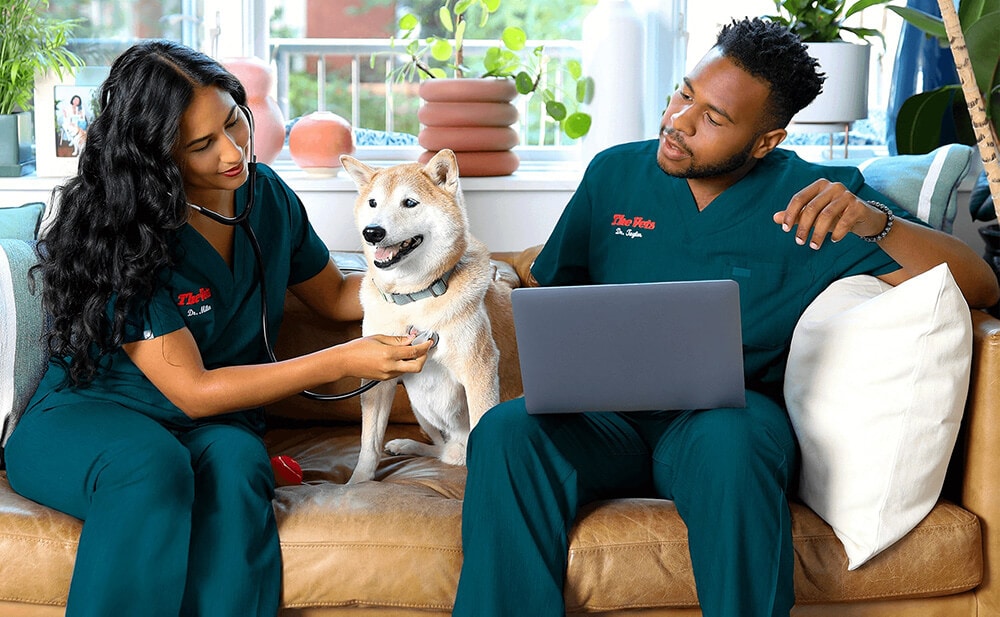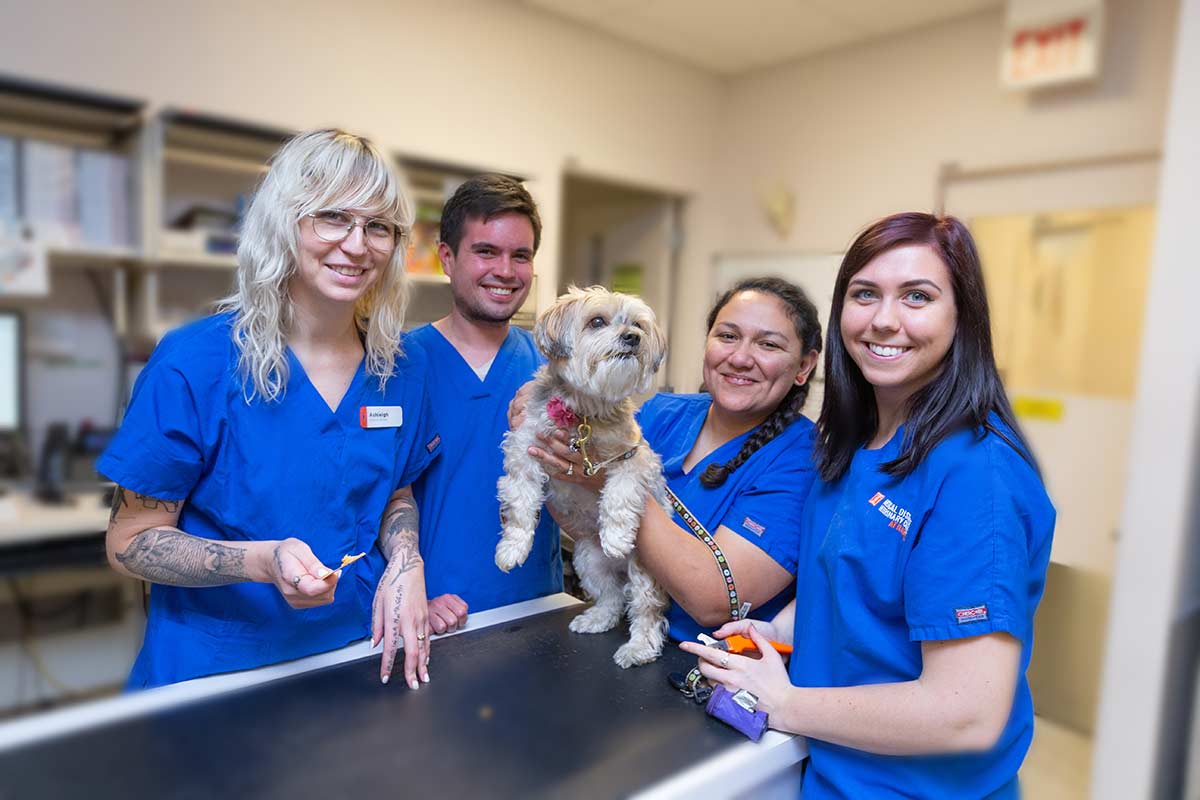What Happens During a Visit to an emergency vet? Step-by-Step Walkthrough
All About Vet Surgical Treatment: Recognizing the Importance of Professional Take Care Of Your Family pets
Vet surgical procedure is a vital element of animal healthcare. It incorporates different treatments, from routine optional surgical procedures to immediate interventions. Understanding the details of these surgical treatments can help pet dog proprietors make educated decisions. The prep work, execution, and recuperation stages are necessary for making certain the health of pets. With correct understanding, owners can browse the intricacies of veterinary care. What elements should be taken into consideration prior to a pet dog undertakes surgical procedure?
Kinds of Vet Surgeries
When a family pet requires medical intervention, understanding the numerous kinds of veterinarian surgical treatments can aid family pet owners make notified choices. Veterinary surgeries can be extensively categorized into 3 major kinds: elective, urgent, and emergency surgical treatments. Optional surgical procedures, such as spaying or neutering, are intended treatments that are not immediately dangerous. Immediate surgeries, like those for international body removal, must be done quickly yet are not deadly in the moment. Emergency situation surgical procedures, such as those dealing with severe injury or interior bleeding, are critical and need instant attention.Additionally, surgical procedures can differ in intricacy, ranging from minimally intrusive laparoscopic procedures to more substantial open surgeries. Each kind of surgery brings its very own risks and healing procedures. Comprehending these categories allows animal proprietors to involve in meaningful discussions with vets, causing much better outcomes for their precious family pets.
Planning for Your Family pet's Surgical procedure
Getting ready for a pet's surgical procedure entails a comprehensive checklist to assure all essentials are covered. Efficient communication with the veterinarian is essential for comprehending the procedure and any type of necessary pre-operative steps - canine tplo surgery. Additionally, having clear post-operative care directions will assist owners supply the most effective support for their recuperating family pets
Pre-Surgery Checklist Essentials
Ensuring a smooth surgical experience for a family pet needs careful prep work and interest to information. A pre-surgery list is necessary for animal owners to follow. First, confirming the arranged surgery day and time is important. Owners should likewise validate that their pet dog has not eaten according to the vet's guidelines, generally for 8-12 hours before surgical procedure. Gathering necessary medical documents, consisting of vaccination background, is important for the veterinarian's review. It is also recommended to prepare a comfy area in the house for the family pet's healing after surgical treatment. Finally, proprietors should have a plan for transport to and from the vet facility, seeing to it that the family pet is secure and comfy throughout the journey. Following these steps can significantly boost the surgical experience.
Connecting With Your Veterinarian

Reliable interaction with the veterinarian is necessary for an effective medical experience for pets. Owners need to be prepared to discuss their family pet's case history, consisting of any kind of pre-existing conditions, medicines, and allergies. This details aids the veterinarian evaluate dangers and tailor the surgical strategy appropriately. In addition, pet dog proprietors must ask inquiries regarding the procedure, anesthesia, and expected outcomes to ensure they completely understand the procedure. Making clear any type of questions can ease anxiety for both the pet and the proprietor. It is also essential to connect any behavioral adjustments or issues observed in the family pet leading up to the surgery. Inevitably, clear dialogue promotes trust and partnership, making certain that animals obtain the finest possible treatment during their medical journey.
Post-Operative Treatment Instructions
After talking about the operation with the veterinarian, animal proprietors must concentrate on post-operative care guidelines to promote a smooth recovery for their pets. These guidelines usually include monitoring the surgical site for indications of infection, such as soreness or discharge. Animals may need to be kept one's cool and constrained to stop too much activity that can interfere with healing. Pain management is essential, so owners need to adhere to the vet's advice on administering medications. Furthermore, nutritional constraints might be encouraged to stay clear of gastrointestinal distress. Routine follow-up consultations are essential to guarantee correct recovery and address any worries. By adhering to these post-operative care guidelines, pet dog owners can substantially add to their pet's recuperation and general health.
The Surgery Explained
The surgery for pet dogs encompasses crucial steps that guarantee their safety and healing. Pre-surgery prep work are vital for decreasing threats, while post-operative care guidelines play an important duty in promoting recovery. Comprehending these components aids pet dog owners browse the surgical experience better.
Pre-Surgery Preparations
Prior to a family pet goes through surgical treatment, a number of essential preparations have to take area to ensure a secure and effective treatment. A detailed vet assessment is vital to go to my blog analyze the animal's general health and determine any type of potential risks. This may consist of blood tests, imaging, or other diagnostics. The veterinarian will certainly additionally talk about anesthesia options customized to the pet's details needs. In addition, pet dog owners are generally advised to hold back food and water for a defined time prior to surgical procedure to minimize the danger of complications during anesthesia. It is necessary for proprietors to offer a complete case history, including any type of drugs or allergies, making certain the surgical group has all required information. Proper interaction and adherence to pre-surgery standards can greatly boost the result of the procedure.
Post-Operative Care Standards
Proper post-operative treatment is necessary for ensuring an animal's recuperation following surgical treatment. After the treatment, pets must be monitored carefully for any type of indications of problems, such as excessive bleeding, swelling, or unusual behavior. It is very important to follow the veterinarian's guidelines pertaining to medications, consisting of painkiller and prescription antibiotics. Family pets must be kept in a quiet, comfortable setting to reduce stress and anxiety and advertise healing. Restricting task is important; short, leashed walks may be needed, yet jumping or running must be avoided. Normal follow-up consultations need to be arranged to assess the recovery process. In addition, the surgical site needs to be kept clean and dry, with any type of indications of infection reported to a vet without delay. Following these guidelines improves healing outcomes.
Anesthetic and Discomfort Management
Effective anesthesia and discomfort monitoring are vital parts of veterinary surgery, making certain that family pets stay comfortable and secure throughout the treatment. Veterinarians analyze each animal's specific demands, taking right into account factors such as age, weight, health standing, and the kind of surgical procedure being performed.Anesthesia protocols useful content usually consist of a mix of pre-anesthetic drugs, induction representatives, and inhalant anesthetics, permitting exact control over the animal's degree of awareness. Tracking during surgical treatment is vital; veterinarians continuously observe essential indications to attend to any kind of prospective problems promptly.Pain administration techniques may entail opioids, non-steroidal anti-inflammatory medicines (NSAIDs), and anesthetics, tailored to the family pet's specific scenario. This diverse strategy helps minimize pain and promotes a smoother medical experience. By prioritizing efficient anesthetic and discomfort management, veterinary specialists enhance the total welfare of animals going through procedures, guaranteeing they obtain the highest possible standard of care.
Post-Operative Treatment and Healing
Complying with surgical treatment, the focus changes to post-operative care and healing, which is vital for guaranteeing a pet's secure go back to typical tasks. During this duration, family pets require a peaceful, comfy environment to aid recovery. Proprietors need to closely monitor their pets for any type of indications of discomfort or uncommon behavior.Veterinary standards commonly consist of details guidelines connected to medicine management, wound treatment, and dietary modifications. It is crucial to comply with these referrals to minimize complications and advertise healing. Animals might need to be limited from vigorous tasks, such as running or jumping, throughout their recuperation period (emergency vet near me).Regular follow-up visits with the vet permit surveillance of the animal's progress and prompt adjustments to the care strategy. Providing emotional support and friendship can additionally improve a family pet's recovery experience, aiding to ease anxiety and anxiousness. Overall, thorough post-operative care plays a considerable function in accomplishing a successful healing
Identifying Issues After Surgical Procedure
Just how can animal owners identify problems after surgery? Awareness of particular signs is important for ensuring the health of animals during recovery. Common indications consist of too much swelling, inflammation, or discharge at the surgical website, which might symbolize infection. Furthermore, relentless pain, indicated by yawping or click over here hesitation to relocate, should motivate instant interest. Changes in hunger or water intake can additionally indicate difficulties; a decline in these behaviors might indicate discomfort or distress.Moreover, family pet owners should monitor their pets for any type of uncommon behavior, such as sleepiness or trouble breathing, as these can be indications of major concerns. Vomiting or looseness of the bowels following surgery may require urgent vet analysis. Identifying these complications early can significantly affect a pet dog's recuperation procedure, highlighting the value of caution and prompt interaction with a veterinarian for any kind of worrying signs.
The Role of Veterinary Professionals in Surgical Treatment
Vet experts play a vital duty in making sure the safety and security and success of operations for pet dogs, especially complying with surgery when monitoring and treatment are critical. These experts include vets, veterinary service technicians, and assistance personnel, all of whom contribute specialized abilities to the surgical process.Before surgical treatment, vets perform comprehensive evaluations to assess the family pet's wellness, making certain that any type of underlying conditions are taken care of. During the treatment, the medical group offers anesthetic, keeps sterile settings, and keeps track of essential indications, all important for decreasing risks.Post-operative care is equally substantial; veterinary professionals observe for complications, handle pain, and guide proprietors on recuperation methods. Their expertise allows them to acknowledge early signs of distress or infection, guaranteeing timely intervention. Ultimately, the collective initiatives of veterinary professionals in medical care cultivate a secure atmosphere, promoting the wellness of family pets throughout the surgical trip.

Often Asked Questions
Just how Do I Choose the Right Vet Cosmetic Surgeon for My Animal?
Choosing the best vet specialist entails looking into qualifications, reading evaluations, and evaluating the facility's atmosphere. It is important to reflect on the cosmetic surgeon's experience with details procedures and their communication design when choosing.
What Prevail Misconceptions Concerning Vet Surgeries?
Usual mistaken beliefs regarding vet surgical treatments include ideas that they are always high-risk, unnecessary, or only for emergency situations. Many pet owners ignore the benefits of precautionary treatments and the ability involved in vet medical treatment.
Just How Much Will My Family pet's Surgical treatment Expense?
The cost of an animal's surgical procedure can vary considerably based upon aspects such as the sort of procedure, the veterinarian's experience, and geographical area (tplo surgery). Usually, expenses vary from a few hundred to several thousand dollars

Can My Animal Eat Before Surgery?
Prior to surgery, it is normally suggested that pets avoid consuming for a specific period. This fasting helps in reducing the threat of issues during anesthesia. Proprietors need to consult their vet for precise directions tailored to their pet's demands.
What happens if My Animal Has Pre-Existing Wellness Conditions?
When an animal has pre-existing wellness conditions, it's crucial for the veterinarian to examine these factors before surgery. This evaluation assurances suitable preventative measures are taken, decreasing risks and maximizing the family pet's overall security throughout the treatment.